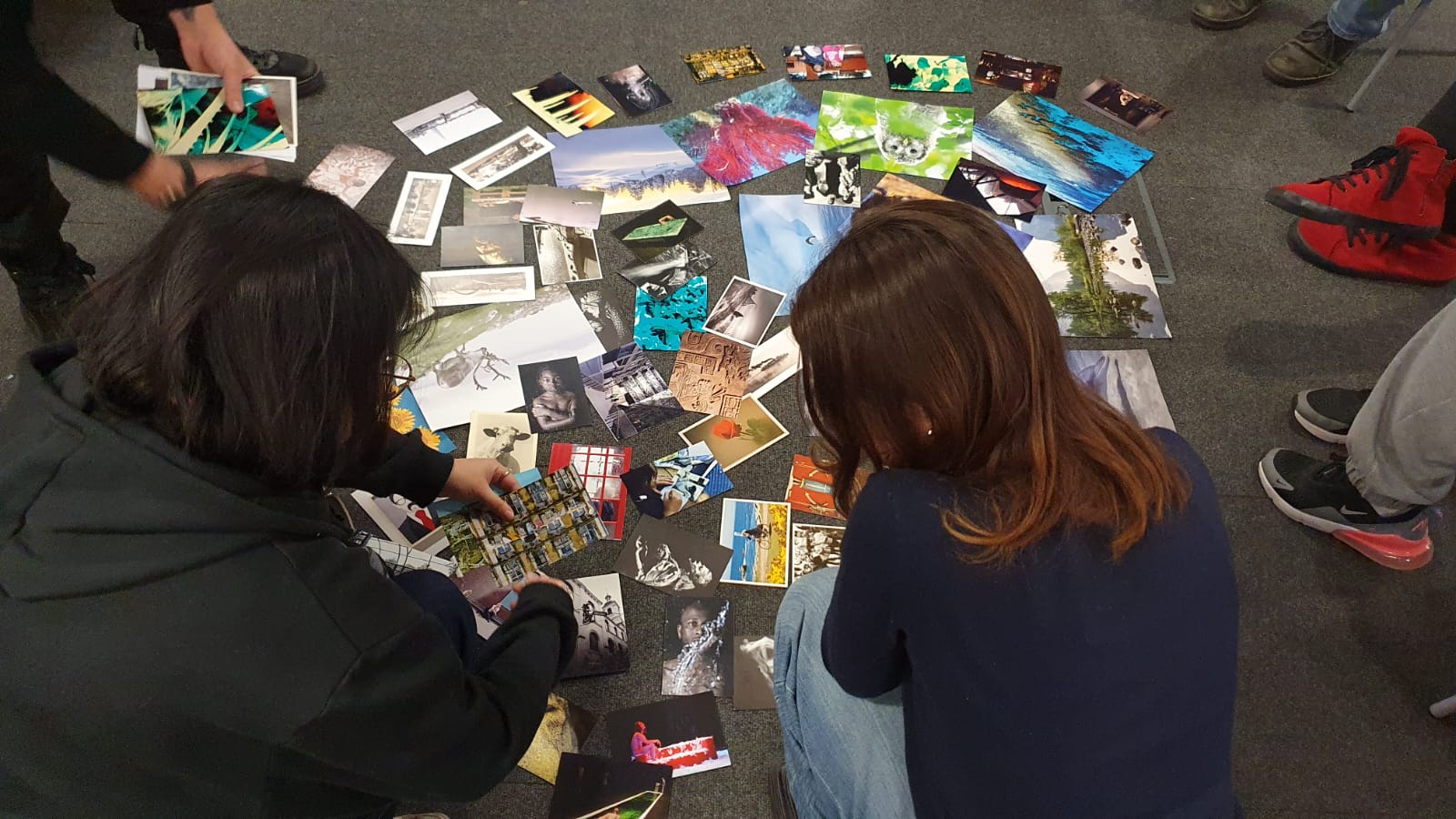The MOTH Project, “is an interdisciplinary initiative advancing rights and well-being for humans, non-humans, and the web of life that sustains us all.” (https://mothrights.org/). The focus of the MOTH Gathering was to learn more about the Sarayaku’s initiatives, including Kawsak Sacha/Selve Viviente/Living Forest (https://sarayaku.org/en/declaracion-kawsak-sacha-selva-viviente-ser-vivo-y-consiente-sujeto-de-derecho/), to learn from the forest itself, and to explore the role of the arts in advancing the MOTH paradigm. Attendees included Indigenous Peoples, attorneys, artists, scientists, writers, musicians, community organizers, and others who are advancing rights of nature.
G_Davies_20240920_MOTH_Gathering_Sarayaku.MP%20(002)_lowres.jpg)
More Than Human Life Gathering in the Amazon, Sarayaku, Ecuador
Another purpose of the trip was for Kai and Gillian to meet with Sarayaku leaders, including Sarayaku President Hernán Eloy Malaver Santi and José Gualinga, Sarayaku Coordinator Team Kawsak Sacha, and others attending the MOTH Gathering to share information about our Darwin Initiative Rights of Wetlands Project.
G_Davies_20240920_WithSarayakuPresident.MP%20(002)_low%20res.jpg)
Kai and Gillian meeting with the Sarayaku President, Hernán Eloy Malaver Santi (second from the left), José Gualinga, Sarayaku Coordinator Team Kawsak Sacha (second from the right), and Giuliana Furci (Founding Director of the Fungi Foundation).
Following the MOTH Gathering, Kai and Gillian had the honour of being included in the Sarayaku community Minga, a two-day celebration involving music, dancing, and visiting between two of the Sarayaku villages.
G_Davies_20240921_Minga_DrinkingChichaWithChiefs.MP%20(002)_low%20res.jpg)
Sarayaku community Minga celebration
On our last day, community member Gerardo Gualinga and two of his children took us downriver and deeper into the jungle to visit the largest tree in Sarayaku territory, considered to be a sacred site. We also saw Gerardo’s recently cleared agricultural field and enjoyed a swim in a small tributary to the Bobonaza River.
G_Davies_20240923_BiggestTree_Sarayaku%20(002)_low%20res.jpg)
G_Davies_20240922_BobonazaRiverbank%20(002)_lowres.jpg)
Kai, Gillian, Gerardo and kids visiting the largest tree in Sarayaku territory (left) Bobonaza River – lower than normal water levels (right)
Typically, each day in the Sarayaku forest involves a little rain and a little sun, but more recently, there has been very little rain, due to the drought throughout much of the Amazon and Ecuador. This has created much hotter than normal daytime temperatures, and lower water levels in the Bobonaza River, which is the main transportation corridor in this roadless part of the Amazon. The Sarayaku are worried that river water levels may become too low for their boats, making transportation difficult. They have very limited options for coping with extreme heat since electricity is supplied in very limited quantities by generators, and air conditioning is non-existent. A couple of years ago, many of their homes were flooded by unusually high water in the river. On our way home from Sarayaku, we found ourselves confronted with billowing wildfire smoke from a drought-induced wildfire on the outskirts of Quito, just an 11-minute drive from the guesthouse where we spent our last night in Ecuador.
G_Davies_20240924_Quito_Wildfire_Smoke.MP%20(002)_lowres.jpg)
Wildfire smoke in Quito
Although climate change is impacting all of us, the consequences are more severe for frontline climate communities such as Sarayaku. Advancing the Rights of Wetlands and Rights of Nature paradigm can transform the human-nature relationship to one that supports the Web of Life and avoids the degradation and destruction of nature that is accelerating the climate and biodiversity emergencies and the associated impacts, such as the current Ecuadorian and Amazonian drought, high heat, wildfires, and low water levels.




